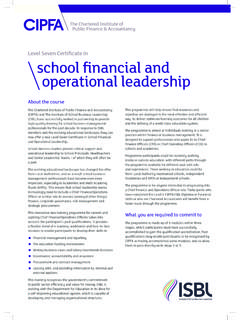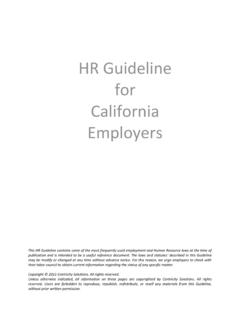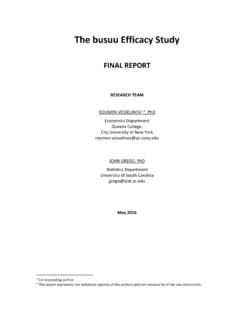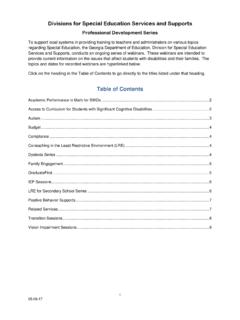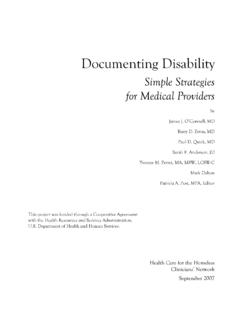Transcription of Understanding leasing Important note: An operating lease ...
1 1 Understanding leasing When it comes to determining the most appropriate equipment leasing strategy for your school , Understanding the main differences between a finance lease and an operating lease is essential. In both cases, the assets or equipment is legally owned by the lessor during the lease term, with rentals paid by the school in order to use the equipment. There are however key differences that you need to know about and this factsheet outlines those. Important note: An operating lease is the only type of lease agreement that state funded schools (local authority or Academy) can enter into without prior approval.
2 In order to enter into a finance lease , trusts must obtain prior approval from EFA. No other form of finance (such as hire purchase) may be entered into by a school as this is a prohibited form of borrowing operating lease : An operating lease requires the school to pay only a proportion of the capital value of the equipment and over a shorter agreement term, classed usually as the equipment s useful economic life. With an operating lease you will only finance a percentage of the total cost of the equipment over the term of the lease , as the provider of the finance must retain a proportion of the original cost, known as the Residual Value.
3 As part of the current accountancy regulations, the funder is required to take sufficient risk in the lease . Most auditors will use the 90% test to establish this. This is not written in to current regulations but is a good guideline. What it means is the lease rentals paid under the primary lease must not exceed 90% of the original capital cost. When working out the 90% test auditors exclude the interest to work out how much capital is being repaid it s Important not to simply add up your rentals The length of the agreement should not exceed the expected useful economic life of the equipment (equipment such as MFDs and photocopiers typically have a useful life of 3-4 years).
4 If you are offered longer, consider the expected whole life of the asset and lease for a term which represents a proportion of this At the end of the agreed lease term, the school can choose to either return the equipment or continue with the rental agreement but be mindful of the point above on useful life of equipment. The ownership of the asset should remain with the leasing company. There should be no option for the school to gain ownership of the asset at any time. The leasing company might retain responsibility for maintenance Payments are shown on the profit and loss account and not the balance sheet due to the nature of the payments 2 Further details of an operating lease can be found under the relevant accountancy regulation SSAP 21 Accounting for leases and hire purchase contracts.
5 Note that for any accounting periods commencing on or after 1 January 2015, this standard will be replaced by the new UK standard, FRS 102. The impact of this in relation to leases will be minimal. FRS 102 takes a risks and rewards approach to the classification of leases, as does SSAP 21, however under FRS 102, the 90% test noted above is no longer relevant. Finance lease : The finance company or lessor is the legal owner of the asset yet will permit the school to have use of that asset during the lease , paid for via a series of rentals or instalments over an agreed term. A finance lease is a form of borrowing, where 100% of the capital plus interest is repaid during the primary term The school has the option to keep the asset by either paying the last rental or in some cases, paying a nominal fee or a significantly reduced purchase price.
6 Under a finance lease , the school repays rentals over the term of the lease but the rentals are not discounted. During the lease term the total rentals will normally cover the value of the asset Questions to ask about finance and operating leases If you are not sure about the type of lease being offered, it is worth asking the following questions using the tables below in order to find out more. Questions to ask to ascertain whether the lease is operating or finance Answer Answer Does the lease transfer ownership of the asset to the lessee ( the school ) by the end of the lease term?
7 Yes - finance lease No - operating lease Does the lessee have the option to purchase the asset at a price which is expected to be sufficiently lower than fair value at the date the option becomes exercisable such that, at the inception of the lease , it is reasonably certain that the option will be exercised? Yes - finance lease No - operating lease Is the lease term for the major part of the economic life of the asset, even if title is not transferred? Yes - finance lease No - operating lease At the inception of the lease does the Net Present Value of the minimum lease payments amount to at least substantially all of the fair value of the leased asset?
8 Yes - finance lease No - operating lease Are the leased assets of a specialised nature such that only the lessee can use them without major modifications being made? Yes - finance lease No - operating lease 3 If still unsure as to type of lease , a mix of yes and no answers to the section above, consider the next set of questions: Answer Answer If the lessee is entitled to cancel the lease , are the Lessor's losses associated with the cancellation borne by the lessee? Yes - finance lease No - operating lease Do any gains or losses from fluctuations in the fair value of the residual fall to the lessee ( in the form of a rebate equalling most of the sales proceeds at the end of the lease )?
9 Yes - finance lease No - operating lease Does the lessee have the ability to continue to lease for a secondary period at a rent that is substantially lower than market rent? Yes - finance lease No - operating lease Are you responsible for maintaining and insuring the asset? Yes - finance lease No - operating lease Steps to take for equipment leases If you are introduced to lease agreements by equipment suppliers, it is recommended you take the following steps: 1. Make it clear within your own organisation who is authorised to sign such agreements. 2. Ensure that the supplier of any equipment is reputable and an accredited supplier of the equipment involved.
10 3. Check the name of the leasing company, and where relevant its parent company, on the page of the lease agreement which you sign and whether this company is a member of the Finance & leasing Association. FLA members are required to ensure that their contracts are clear and unambiguous. 4. Ensure with the supplier that the equipment is new, or if not that you are content that used or refurbished equipment is suitable. 5. Always ensure that the completed contract corresponds with any verbal or written quotation and, for photocopiers or multi-function devices, a lease proposal sheet supplied via the sales person or negotiator involved.
